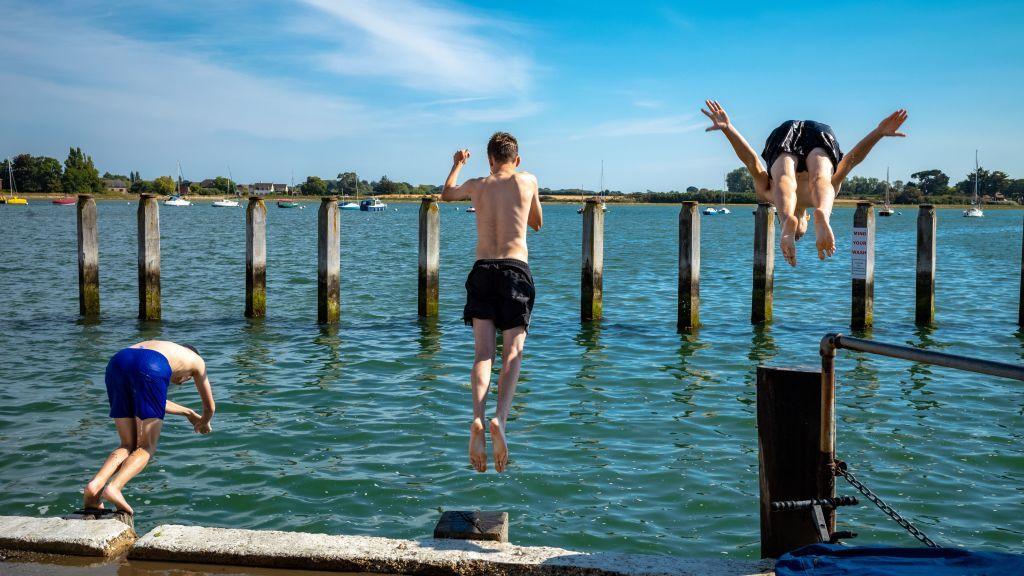Sharp rise in bathing sites rated unfit for swimming

- Published
The number of monitored bathing waters in England rated as poor and unfit for swimming has more than doubled, from 18 to 37.
Out of the 450 sites regularly tested this summer for bacteria related to sewage discharges, 92% reached the minimum standards for bathing, a slight fall from 96% last year.
The Environment Agency - which carried out the testing - says those figures are in part due to 27 new sites being monitored this year, of which 18 were rated poor.
The government called the latest figures “unacceptable”.
Water minister Emma Hardy blamed England’s water companies and said it underlined the need for tougher regulation.
Environment Agency Chair Alan Lovell said the results came against a background of increasing demand for bathing sites across the country.
"While overall bathing water quality has improved in recent decades due to targeted investment and robust regulation, today’s results show there is much work still to do, particularly to bring our inland bathing waters up to standard," he said.
The figures show a notable difference between the quality of bathing sites on the coast and inland.
95% of coastal waters met minimum standards this year, compared to only 53% of rivers and lakes.
The Environment Agency says that’s because salt water can act as a natural disinfectant and the sea naturally disperses pollutants faster.
There has been mounting criticism of England's bathing water quality in recent years, as more data has become available.
River Action CEO James Wallace called the latest results an "international embarrassment".
"The Government’s own data shows that swimming in our inland bathing sites poses serious health risks, highlighting the failure of regulators to protect waterways from polluters," he said.
The designated bathing sites are tested between 10 and 20 times a year for bacteria that are linked to sewage discharges.
At the end each of season the Environment Agency gives them a rating which is based on their results of the previous four years.
Excellent, good or sufficient means they have met the minimum standards – while poor means they have not.
A spokesman for Water UK, which represents the water industry, said that the quality of English bathing water had improved since the 1990s but that the water companies agreed that more needed to be done to reduce sewage discharges.
The companies are currently waiting for the regulator Ofwat to approve billions of pounds of investment in infrastructure paid for by higher customer bills.